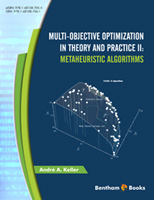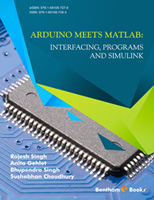With the explosion of video and image data available on the Internet, desktops, and mobile devices, multimedia search is becoming more and more important. Mining semantics and other useful information from large-scale multimedia data to facilitate online and local multimedia content analysis, search, and related applications is gaining attention from both academia and industry.
On the one hand, the rapid growth of multimedia data brings new challenges to multimedia content analysis and retrieval, especially in terms of scalability. Both computational costs and accuracy are still far from satisfactory. On the other hand, large-scale multimedia data provides new ways to meet these challenges and solve conventional problems in media analysis and computer vision. That is, the massive associated metadata, context, and social information available on the Internet, desktops, and mobile devices, as well as the massive number of grassroots users, are valuable resources that can be leveraged to address the aforementioned difficulties.
Today, researchers are realizing that both the challenges and the opportunities presented by the rapid growth of multimedia content, users, metadata, context, and social information. This eBook brings together high-quality research and recent insights into multimedia search and mining. It focuses on online and social multimedia techniques, systems, and applications in order to advance research and development in this promising area. The eBOOK is organized into five sections with a total of seventeen chapters.
Section I introduces recent research on content-based image and video indexing, and consists of three chapters. In the first chapter, Zhang et al. present an efficient visual indexing technique for large-scale image search, the basic idea of which is to decompose a document-like representation of an image into two components, one for dimension reduction and the other for residual information preservation. In the second, Wu et al. review various approaches to near-duplicate web video detection, including combining global features and local features, integrating content and contextual information, and visual-word based scalable retrieval. Finally, Zhang et al. present recent advancements in web scale video retrieval and discuss two methods for efficient visual representation and efficient visual indexing of web videos.
Section II has four chapters addressing concept and tag based multimedia indexing. The first chapter, by Qi et al. introduces large-scale online active annotation for iv Internet multimedia using the two basic techniques - active learning and online computing, and proposes to combine these two techniques in a unified framework, where scalable multimedia annotation can be achieved in an online manner so that both annotation accuracy and efficiency are able to be significantly improved. Li et al. in the second chapter, tackle two issues in social image indexing, that is, the subjectiveness and the incompleteness of the social tags. The third chapter, authored by Borth et al. introduces visual learning of automatic concept detectors from web video as available from services like YouTube, where domain change problem is addressed and a novel approach, which performs a highly efficient online adaptation on the target domain after an initial training on web content. In the last chapter of this section, Liu et al. present techniques to improve the quality of social tags on social media websites, including filtering, refinement and ranking.
Section III, containing four chapters, discusses data mining from Internet multimedia content. Negoescu et al. present a review of current work that leverages on large online social networks’ meta-information, in particular Flickr Groups, in the first chapter. The second chapter, by Li et al. explores how to leverage the web image collection and knowledge databases to convert a textual word into its visual counterpart with sets of high quality, precise, diverse and representative images. In the third chapter, Wu et al. estimate semantic distance of two textual terms through mining visual content from the Internet, where semantic concepts are modeled based on visual language models. And last, Ahlers et al. introduce techniques for mining location of a web image and mining images of a location.
Section IV mainly addresses search and recommendation problems for Internet multimedia with four chapters. Wilkins et al. present an overview of data fusion and how it can be applied to the internet multimedia search, specifically content-based multimedia search. Efrat et al. introduce cross-modality indexing, browsing and search of distance learning media on the Web. Lu and Li present a music indexing scheme by exploiting and utilizing two data sources: surrounding text of the music on web pages and mete-data describing music attributes. Mei and Aizawa introduce the basic techniques for general recommender systems and specific research for video recommendation.
The last section introduces two novel search interfaces for Internet media. The first chapter, authored by Zha et al. proposes a new query suggestion scheme named visual query suggestion to help users precisely express their search intents by joint text and image suggestions. In the second chapter, Wang et al. present an interactive image search interface, color sketch, which enables users to interactively indicate the search intention, in particular, how the colors are spatially distributed in desired 5 images, by scribbling a few color strokes or dragging an image and highlighting a few regions of interest in an intuitive way.
This eBook is well suited for graduate students and senior researchers working in the field of multimedia search and mining, as well as practitioners, including search engine developers, and multimedia content providers. We hope readers find that this eBook enhances their study of and work in internet multimedia search and mining.
Many exceptional colleagues made a significant impact on the development of this eBook. First of all, we would like to thank all the authors for their irreplaceable contributions to the eBook and their patience for the long process of editing this eBook. We would also like to acknowledge our reviewers for their insightful and valuable comments that improved the quality and readability of the eBook: Kiyoharu Aizawa, Susanne Boll, Daniel Gatica-Perez, Winston Hsu, Gang Hua, Xirong Li, Zhu Li, Wei Liu, Yan Lu, Jiebo Luo, Tao Mei, Chong-Wah Ngo, Shin’ichi Satoh, Nicu Sebe, Jialie Shen, Alan Smeaton, Cees Snoek, Dacheng Tao, Meng Wang, Lei Wu, Xing Xie, Changsheng Xu, Rong Yan, and Lei Zhang. Special thanks to Dr. Kuiyuan Yang, who helped us check and correct all the format issues and integrated all the chapters into the final version.
Finally, we are deeply indebted to each of our family members for their patience and understanding as we were creating this eBook.
Xian-Sheng Hua
Microsoft Research
USA
Marcel Worring
University of Amsterdam
The Netherlands
Tat-Seng Chua
National University of Singapore
Singapore





